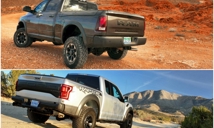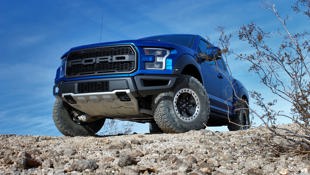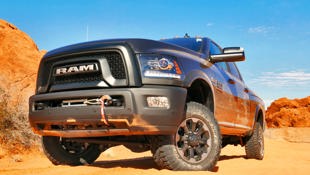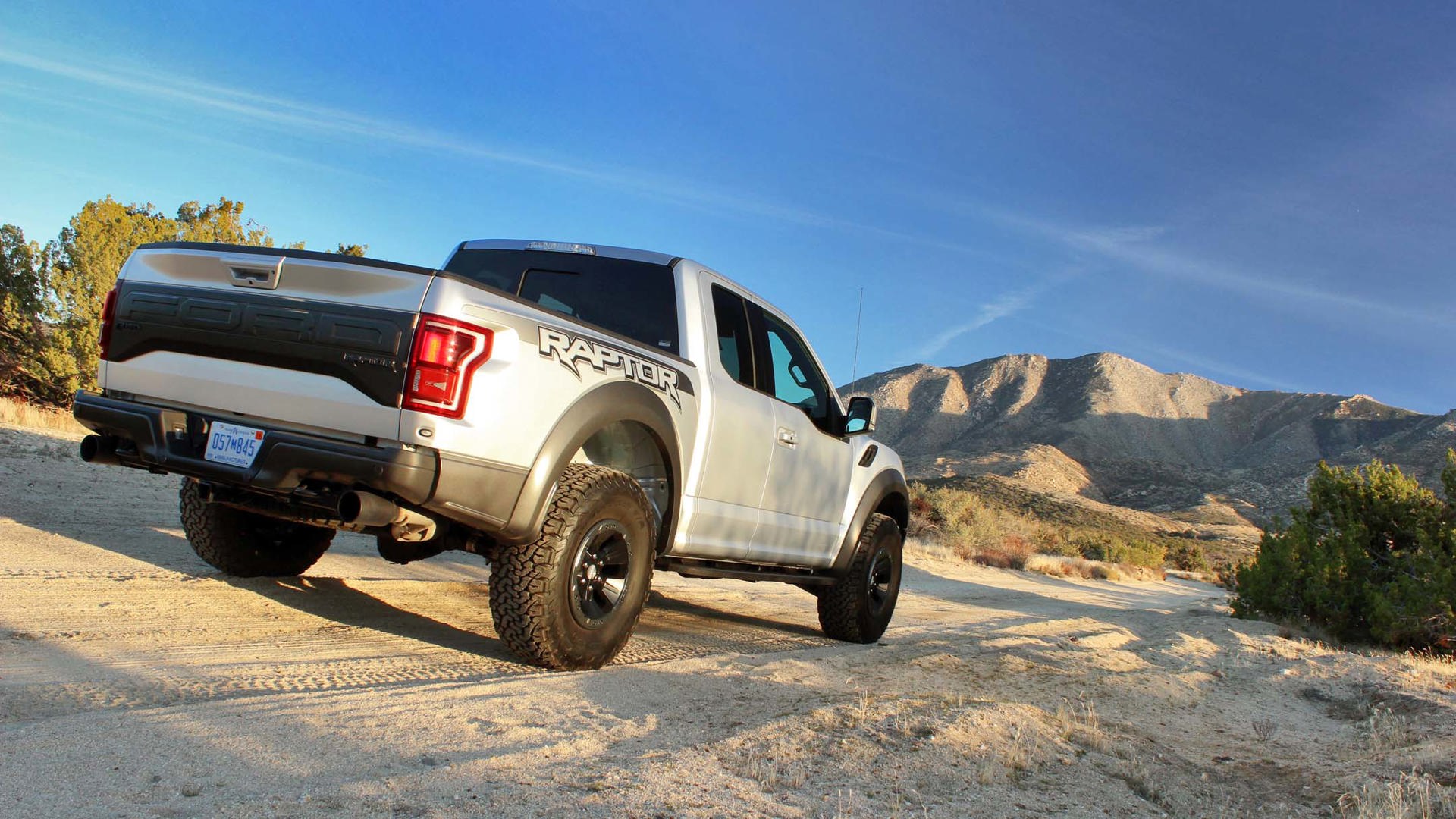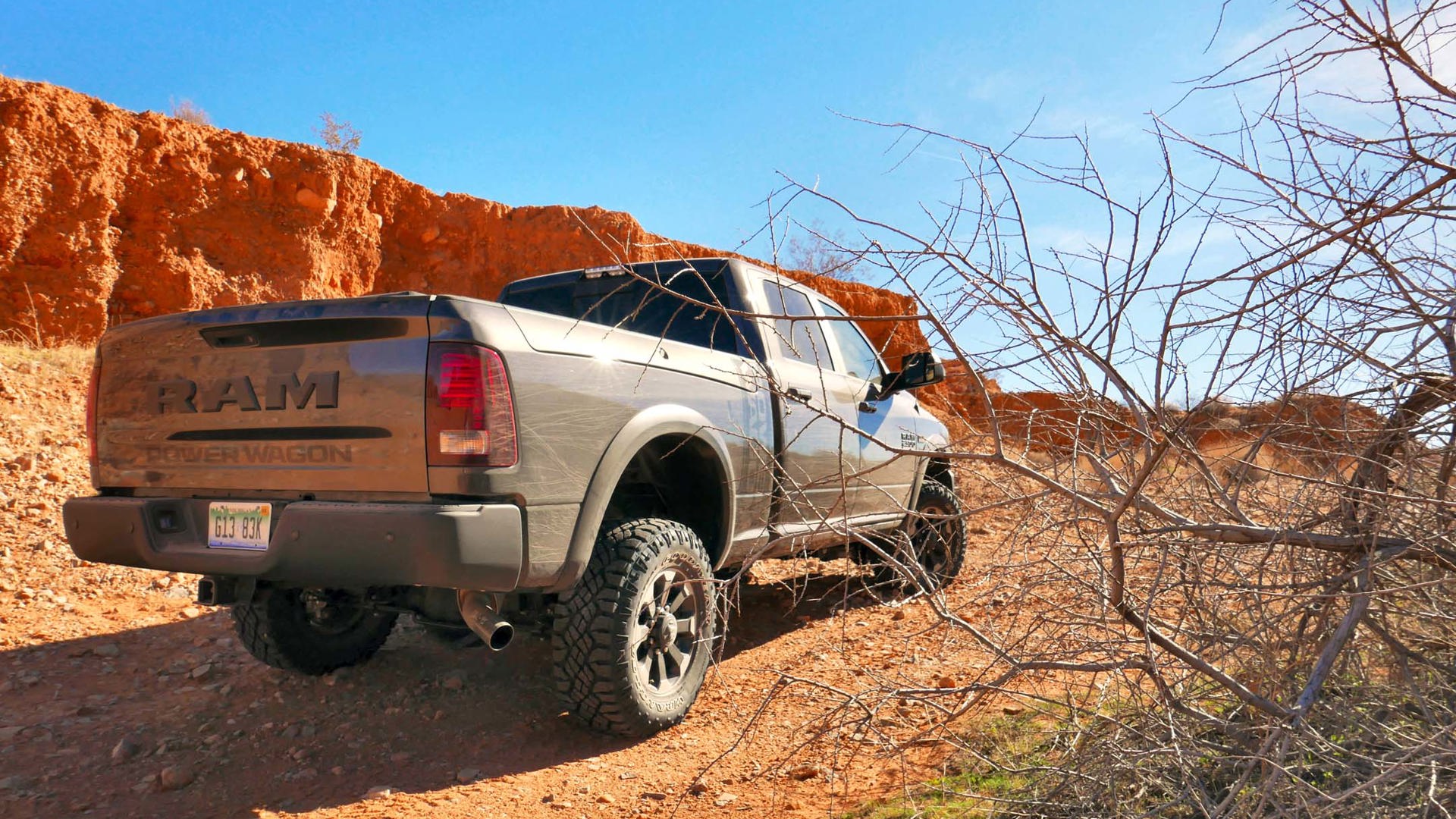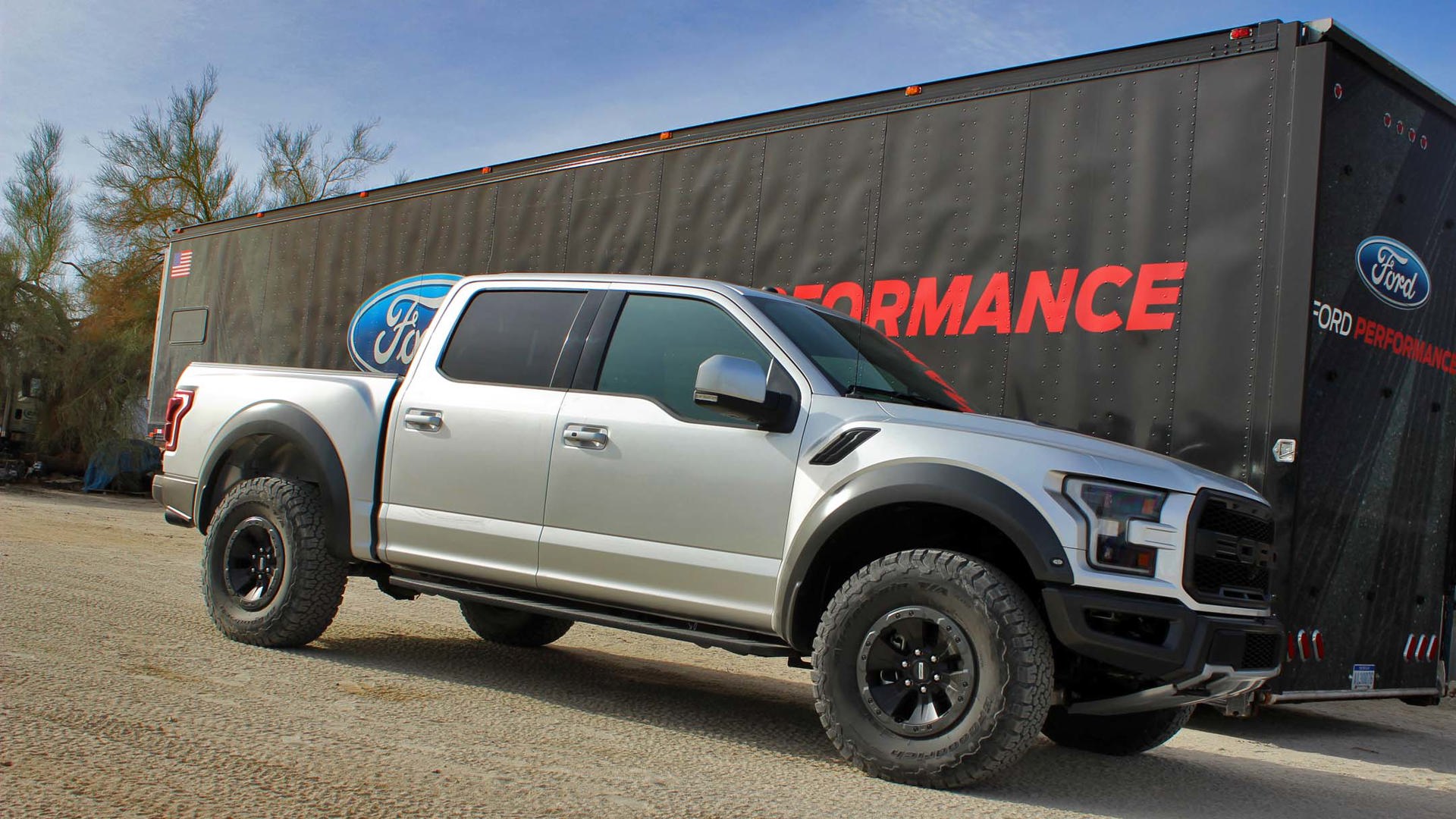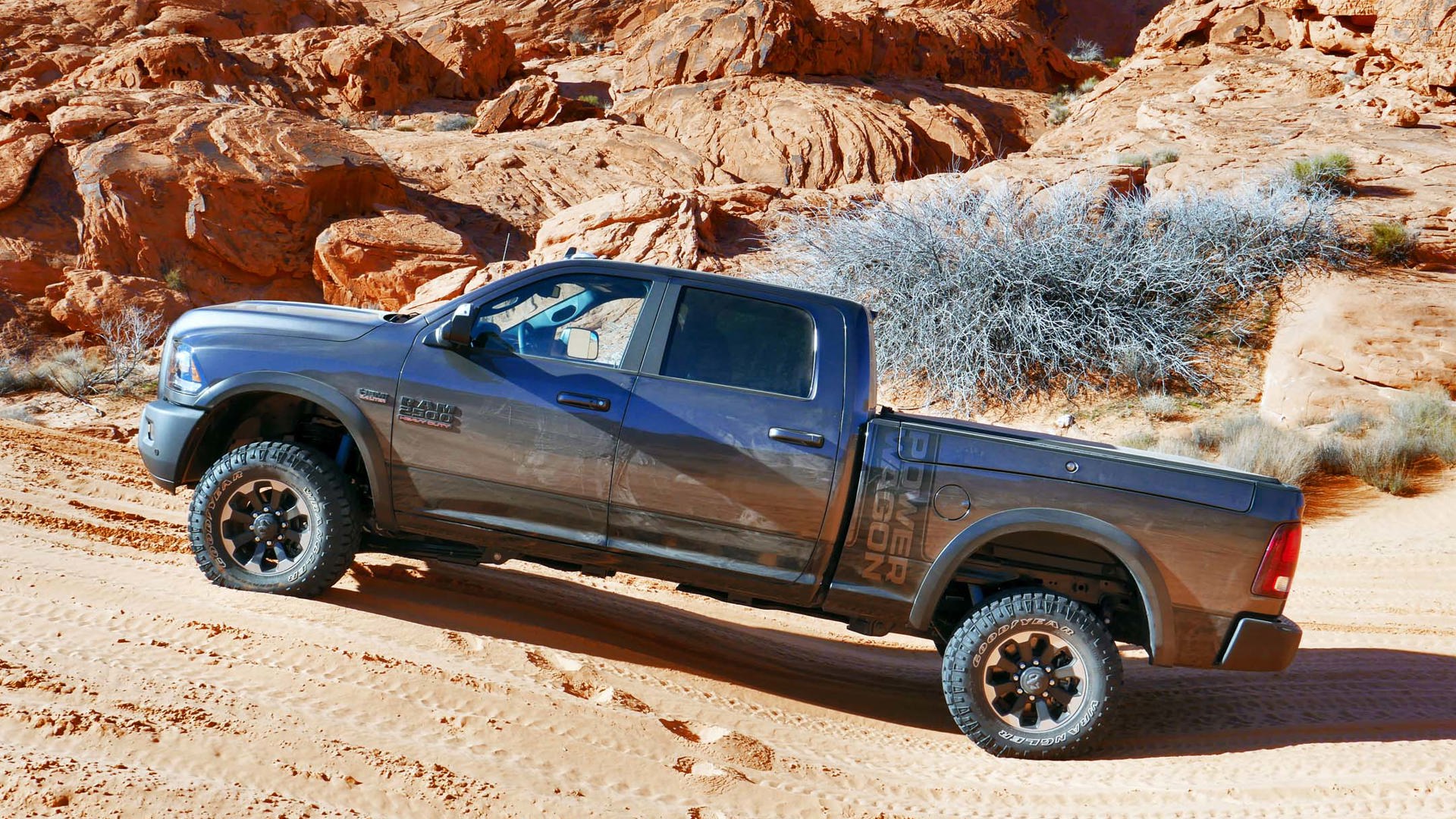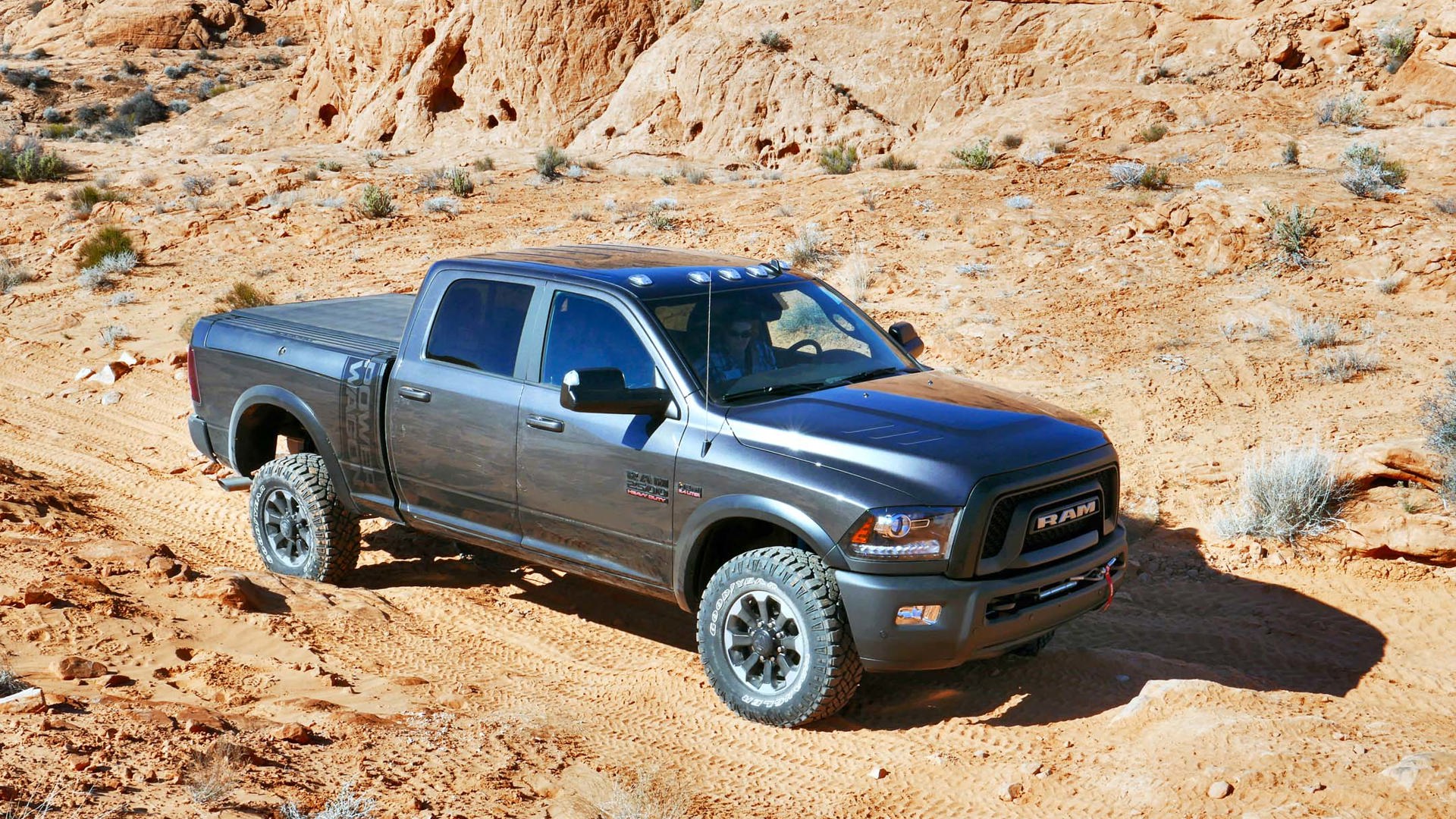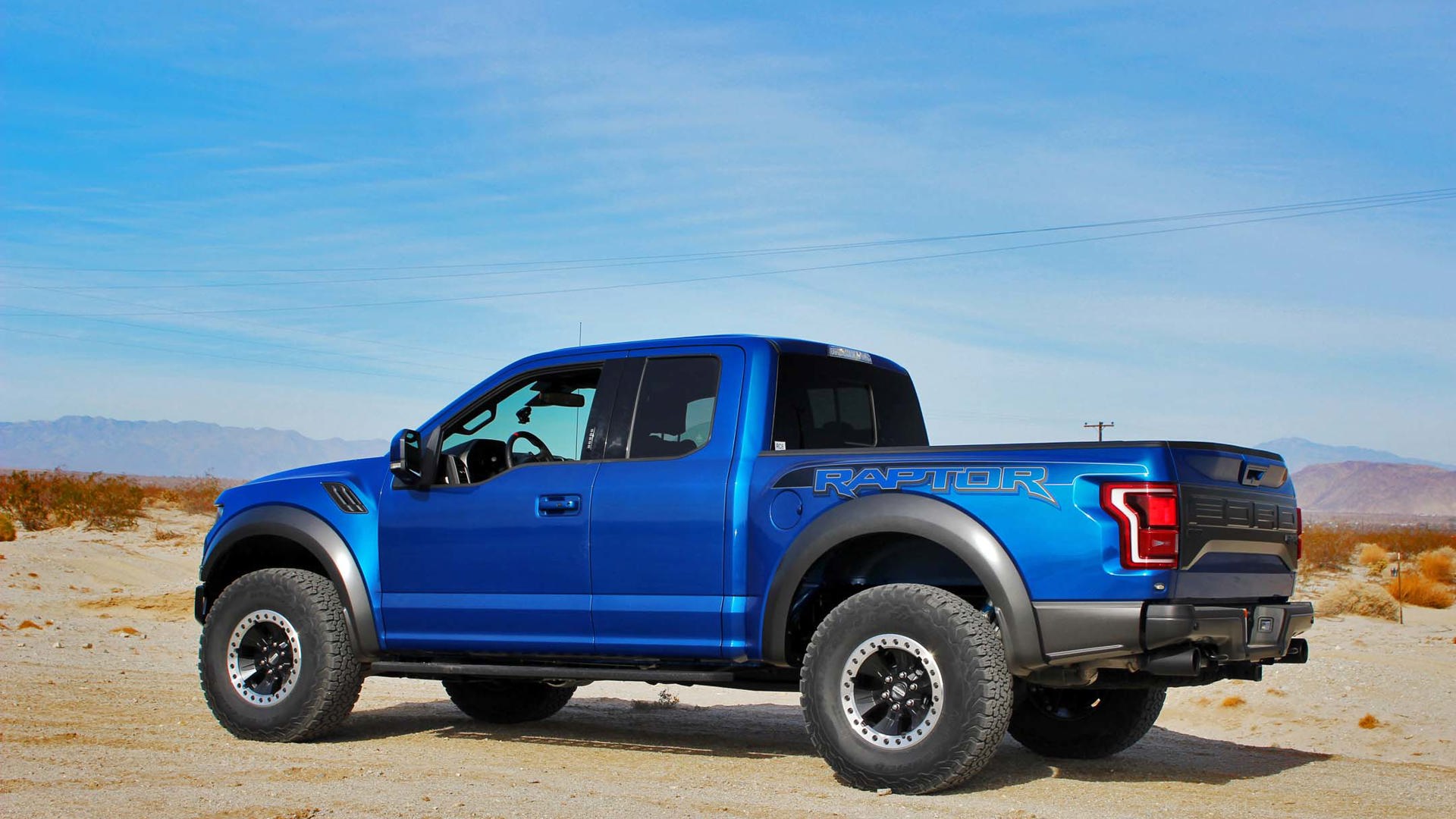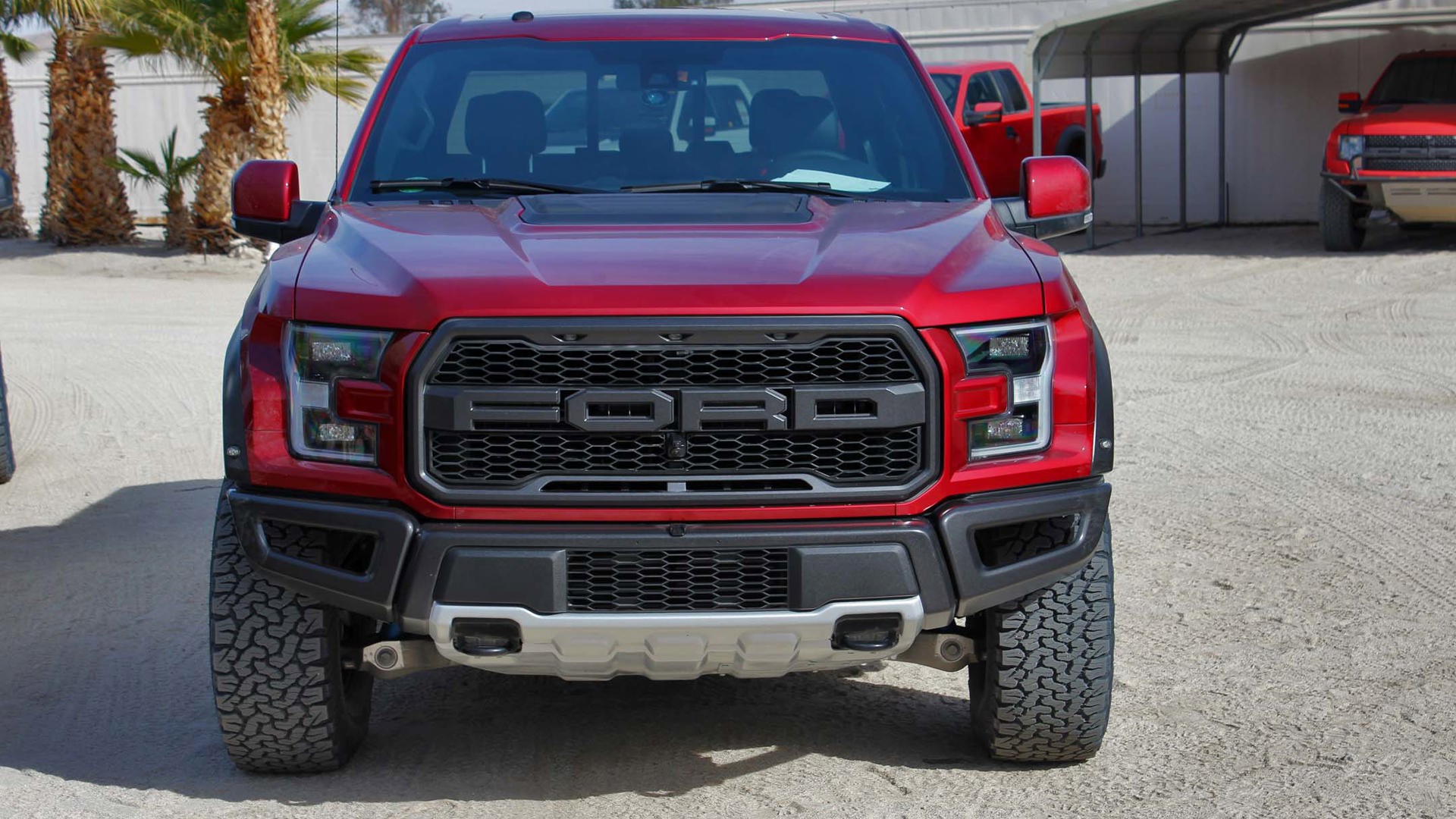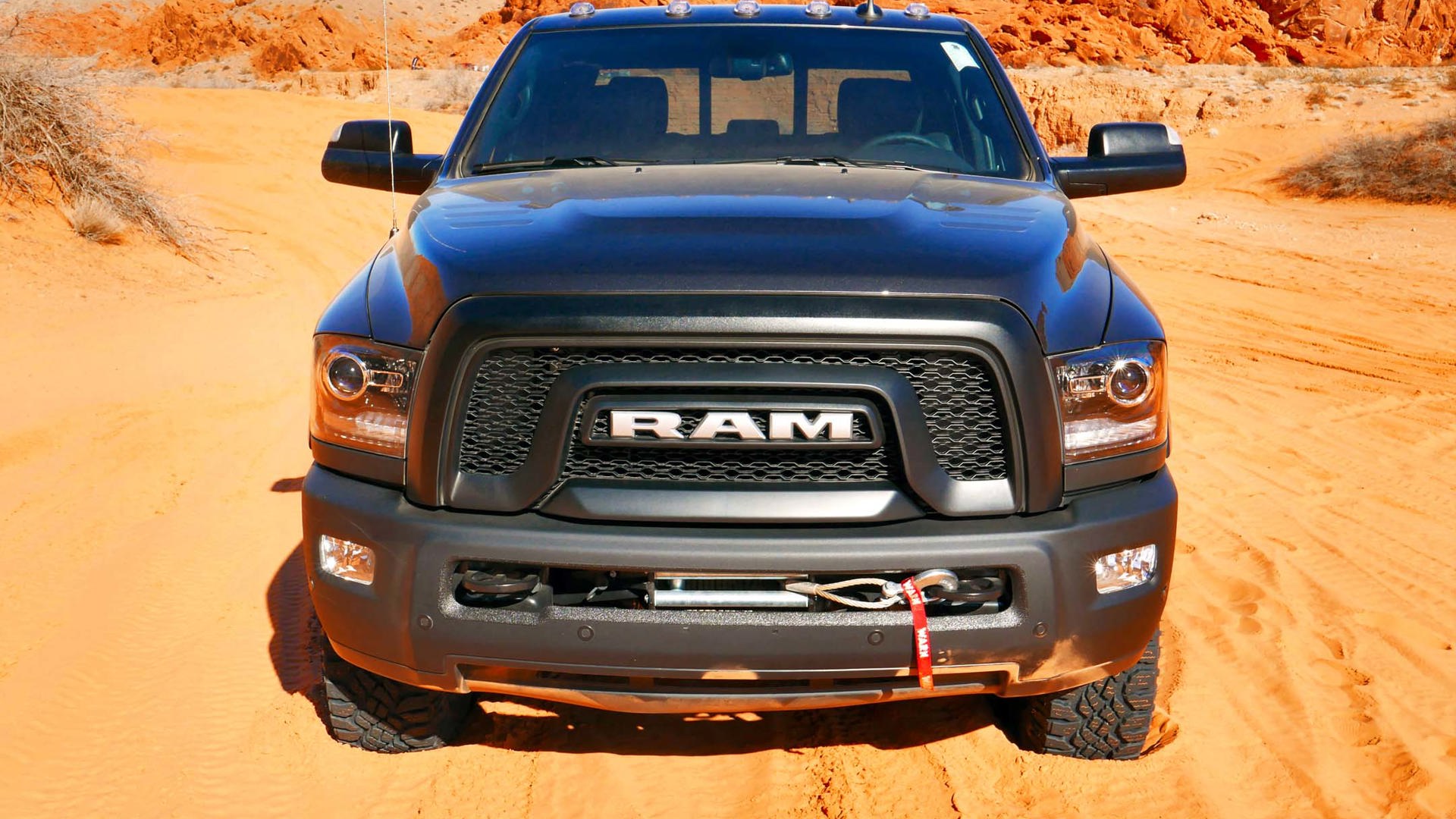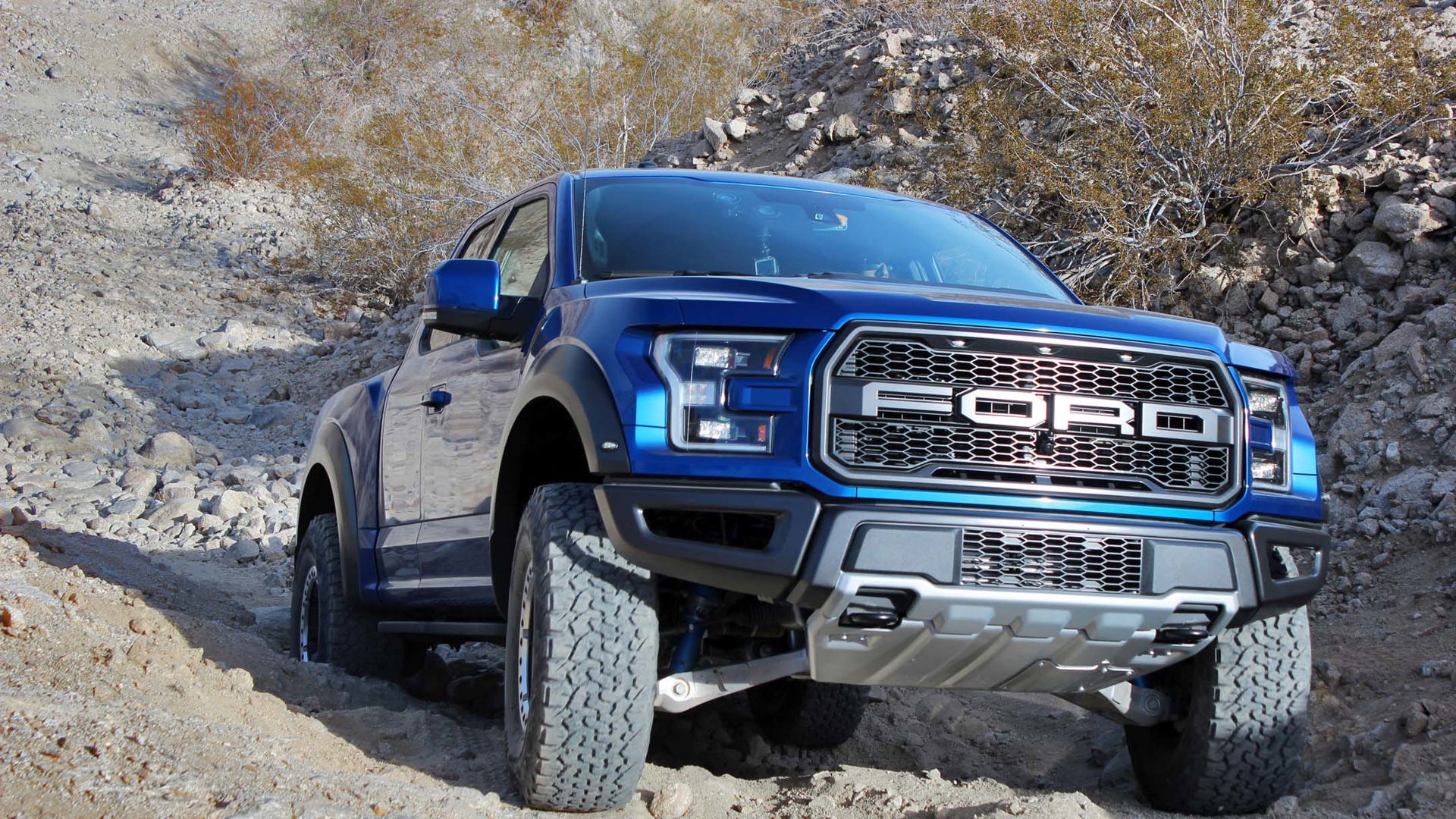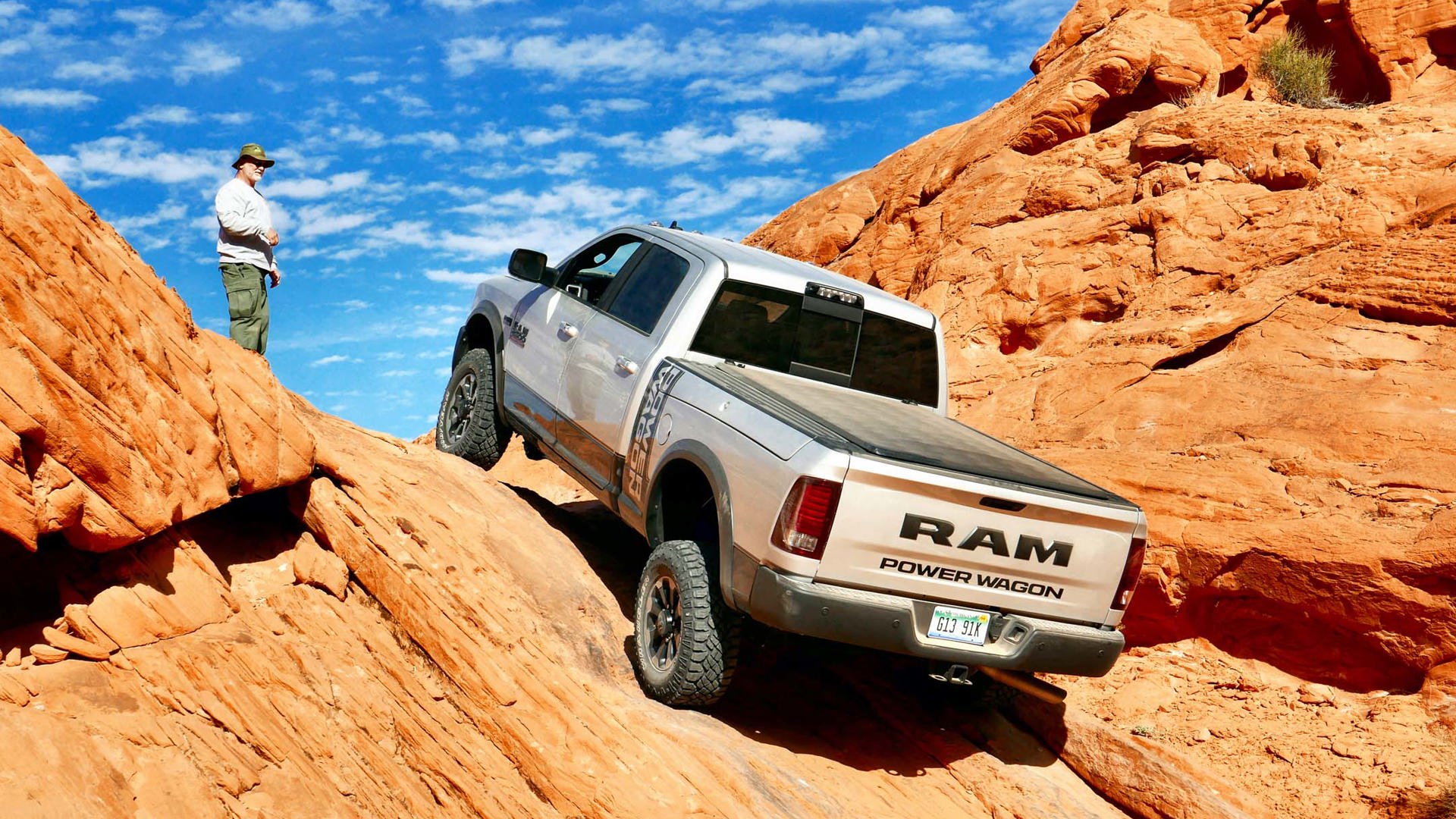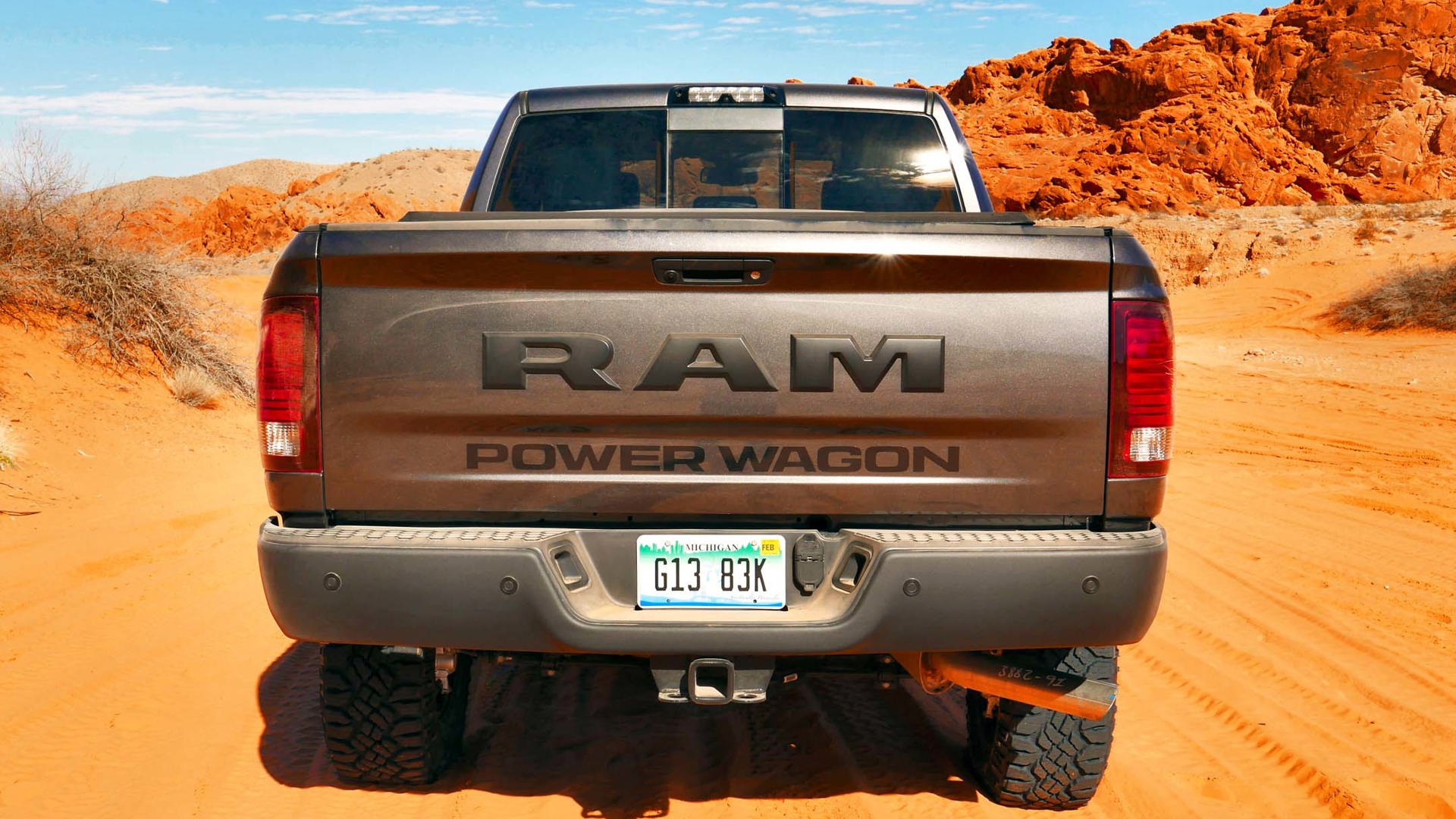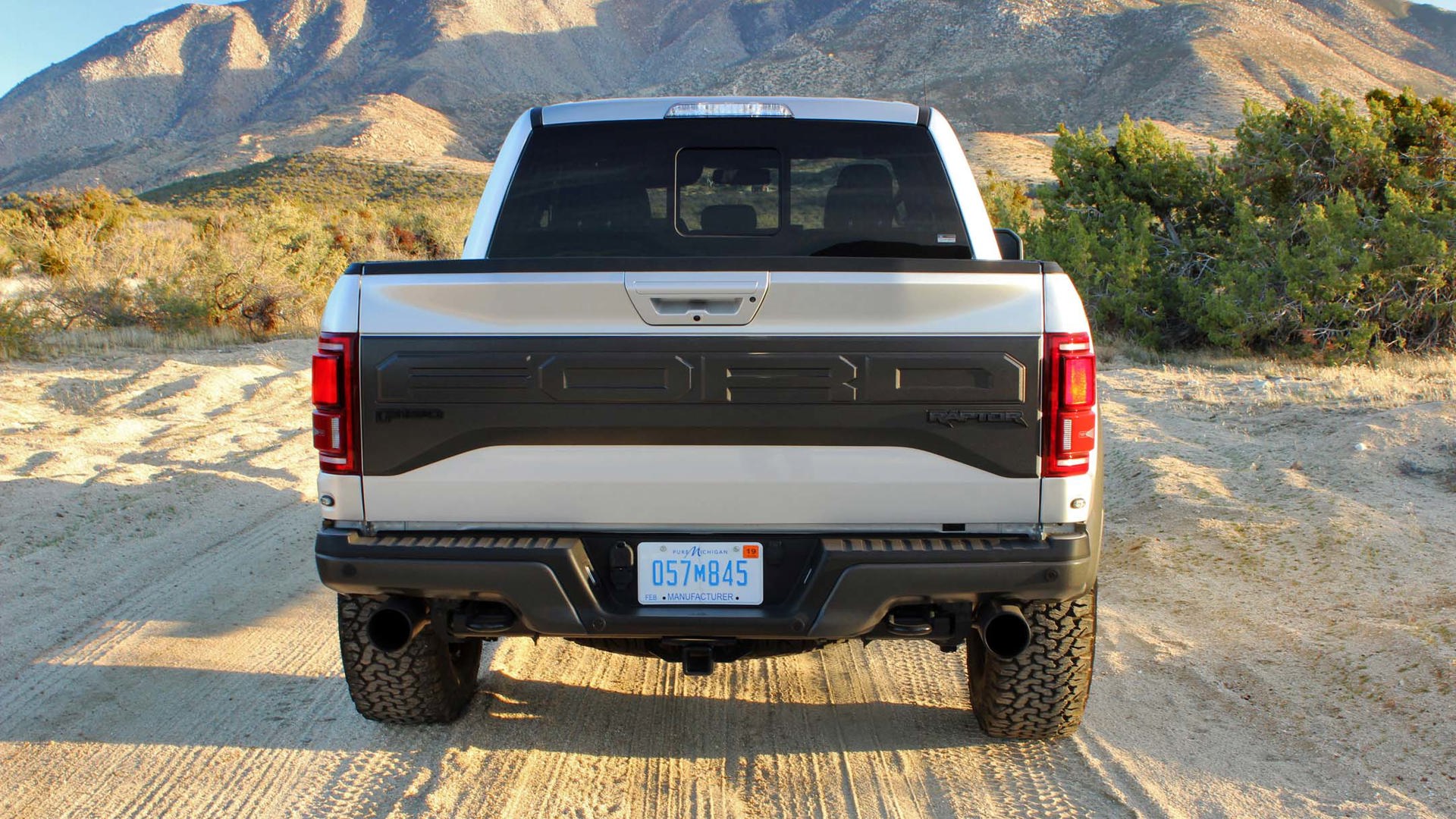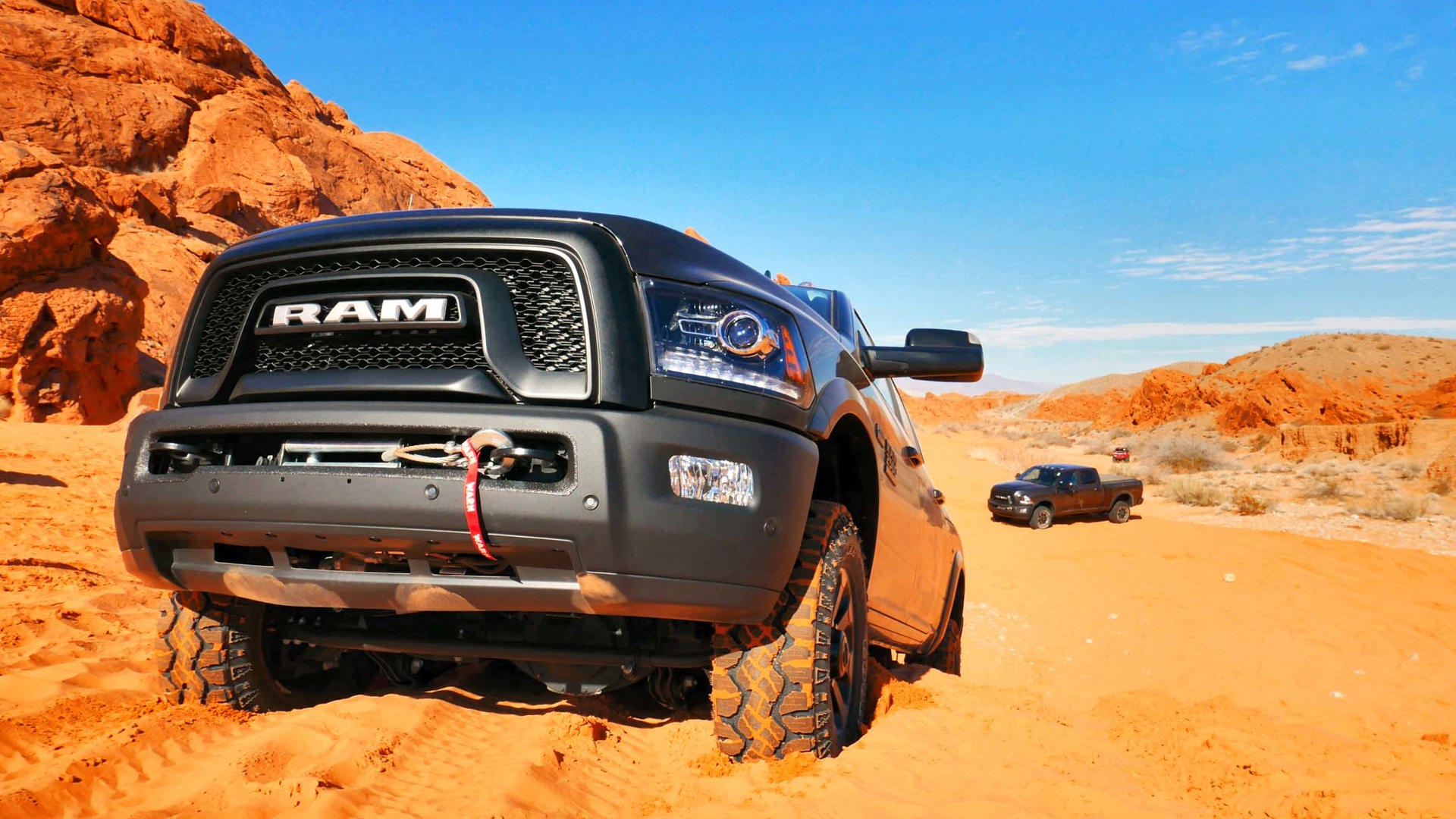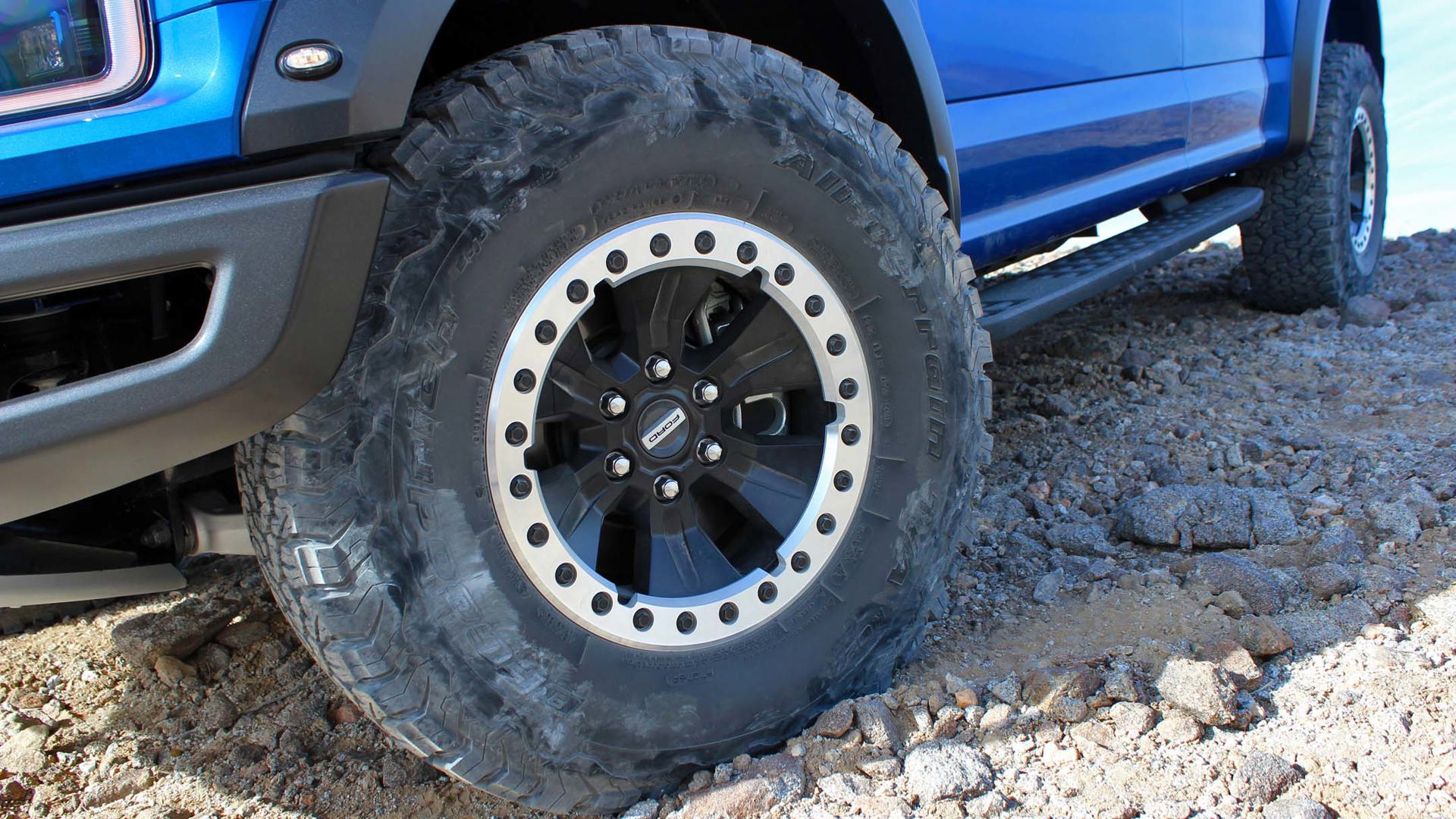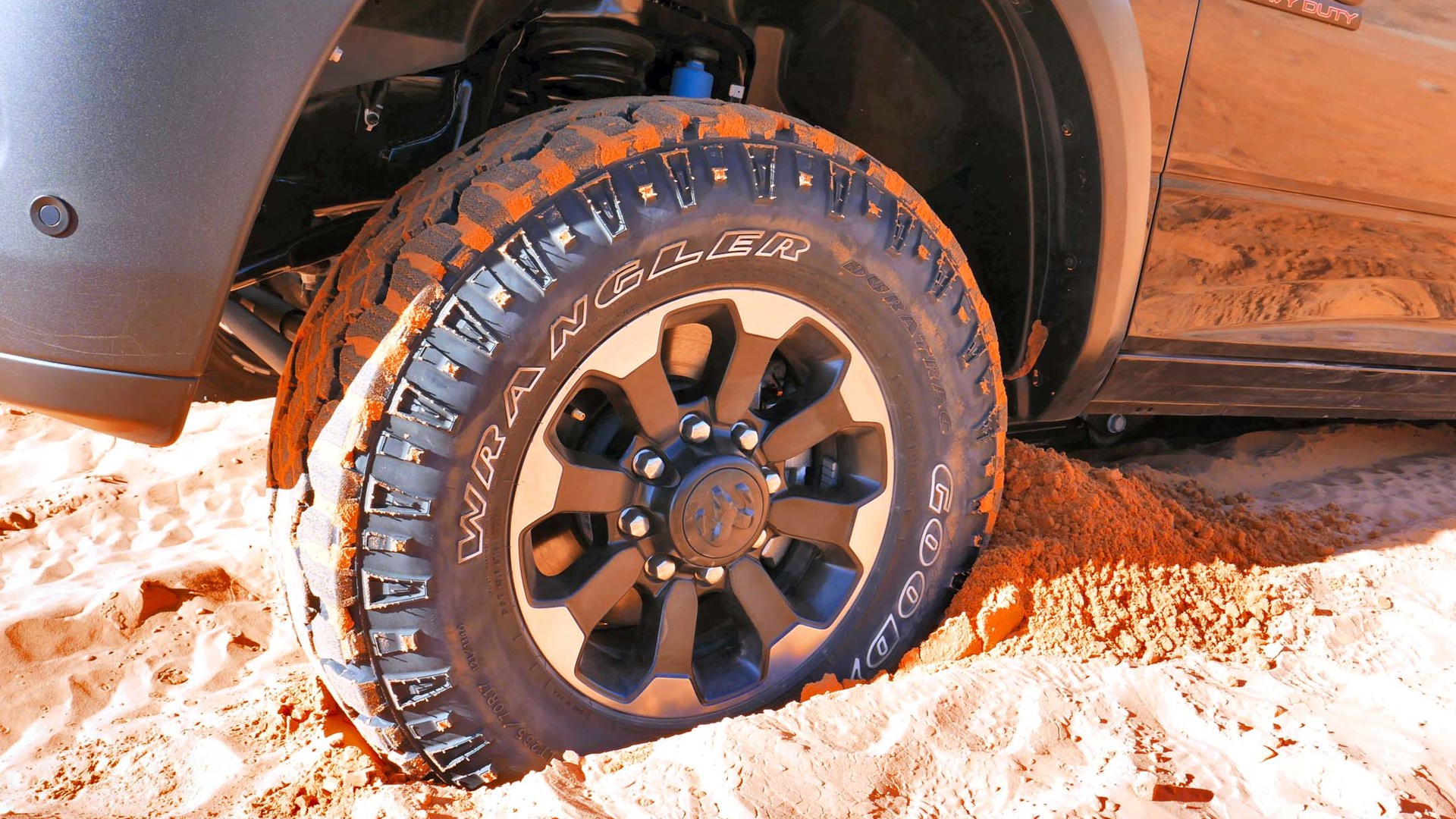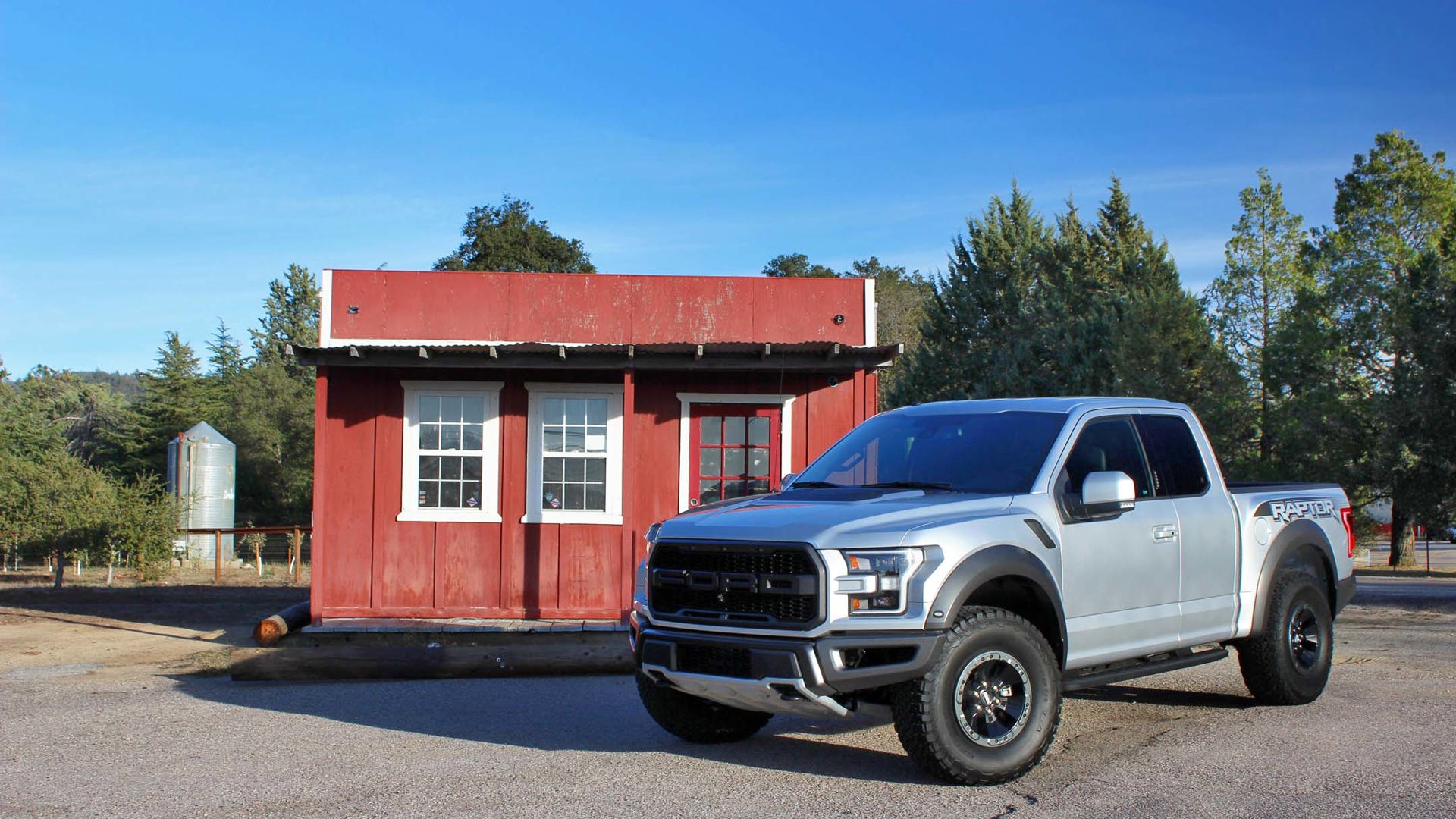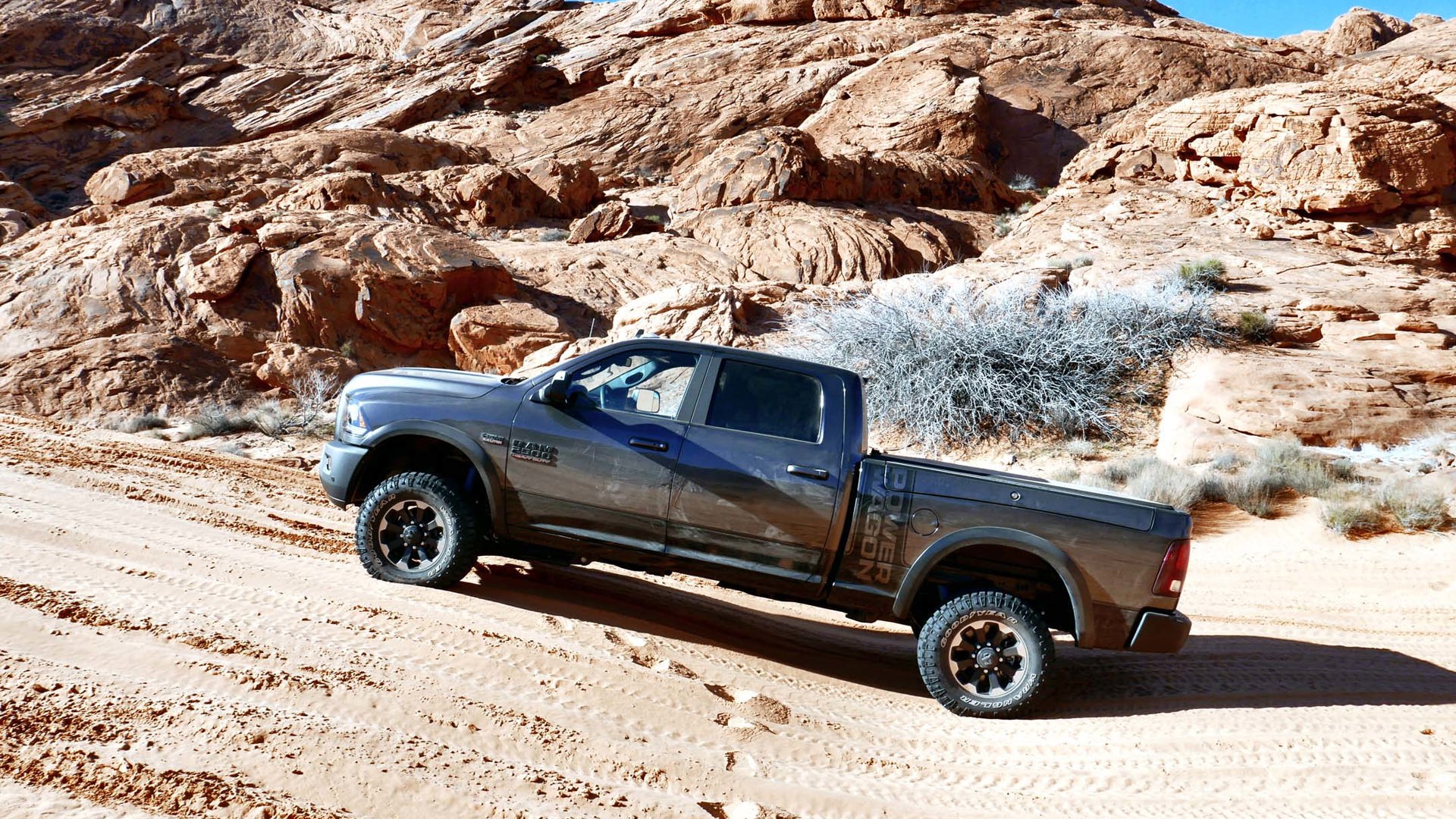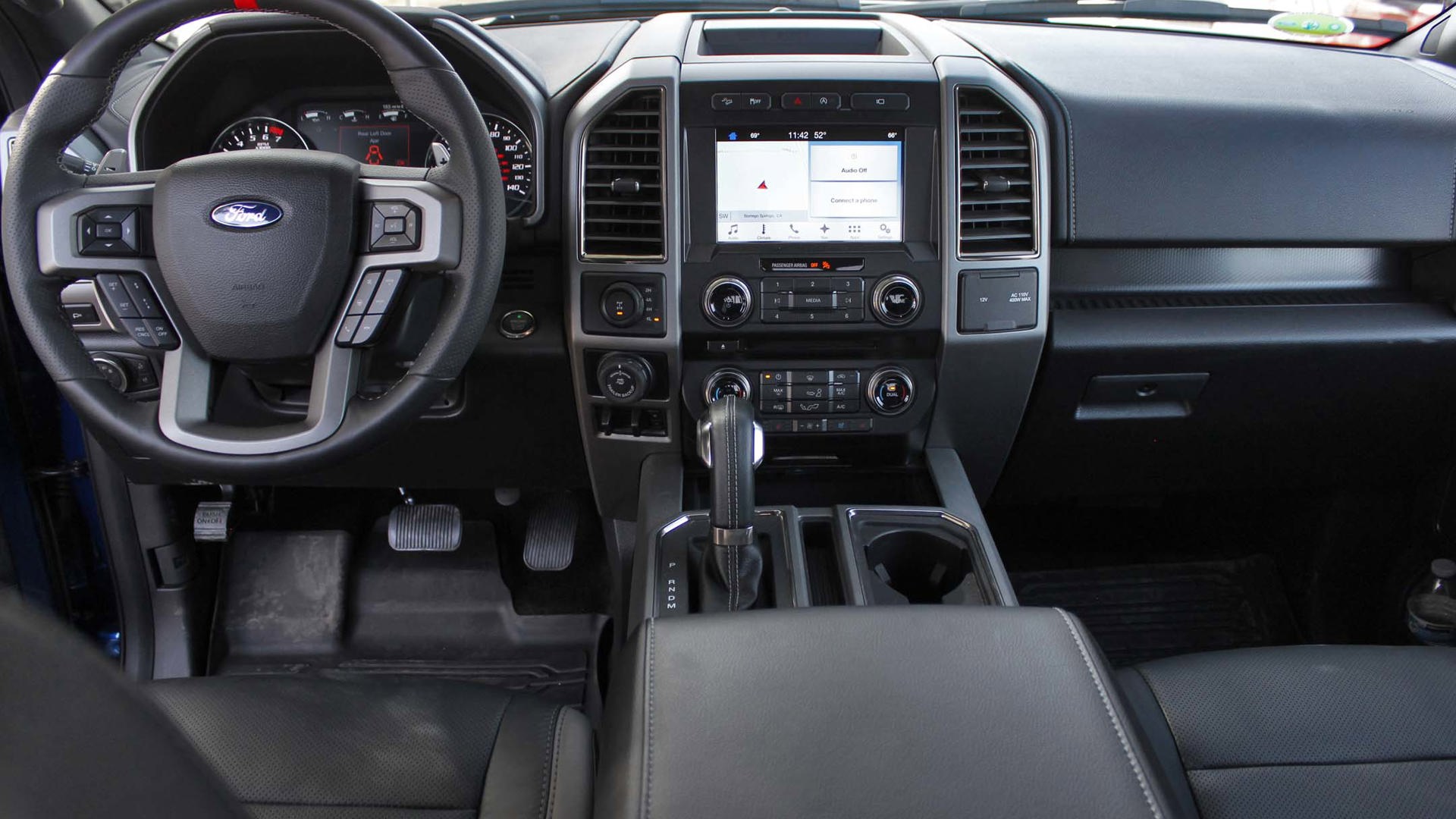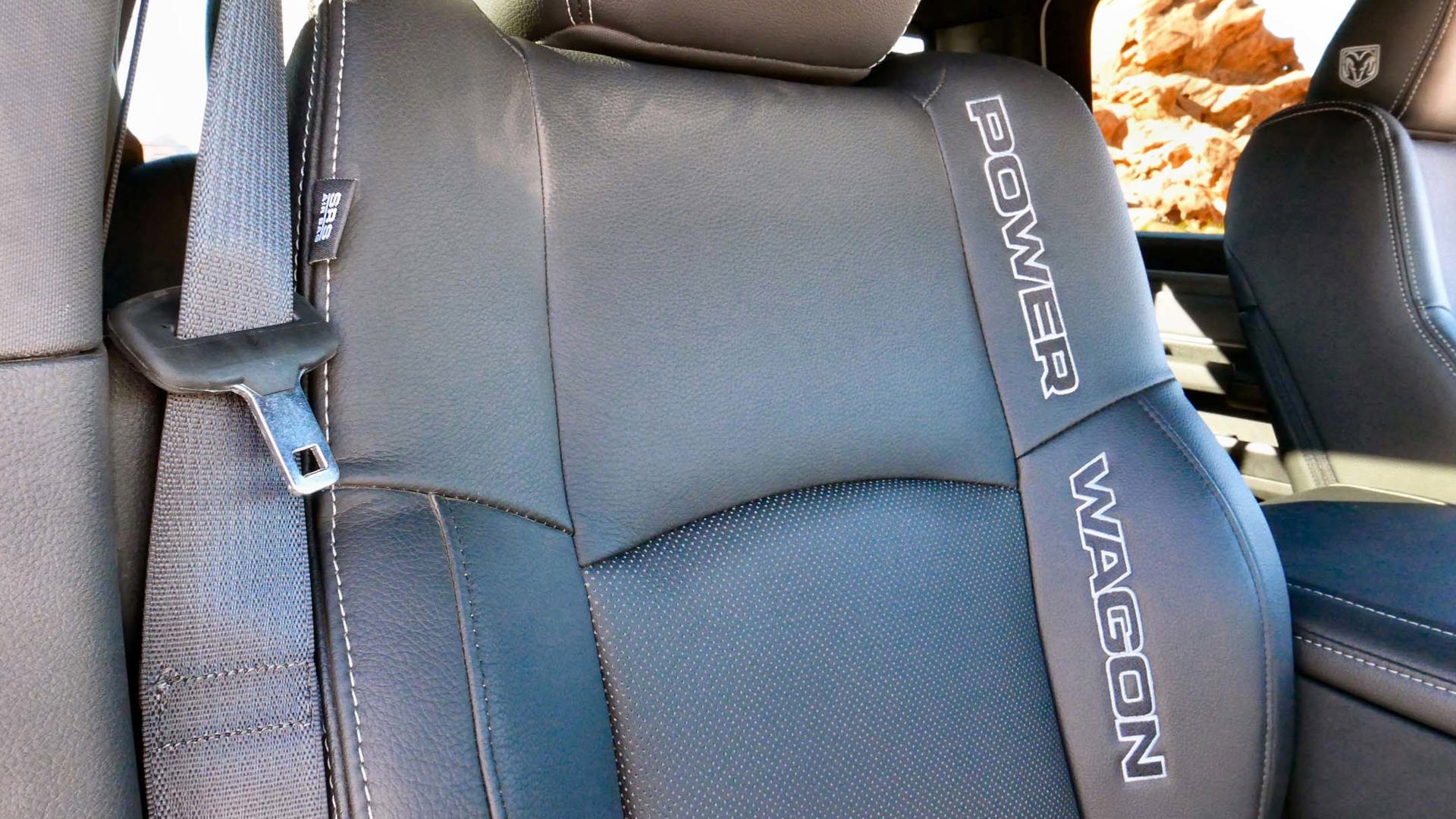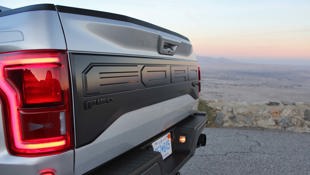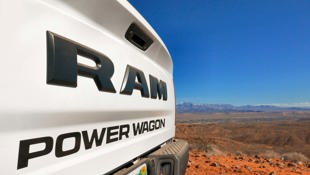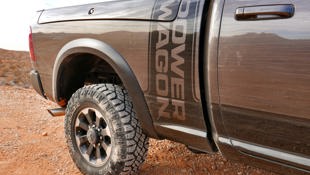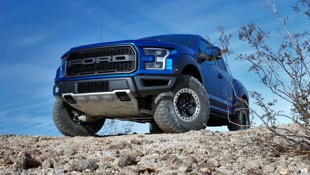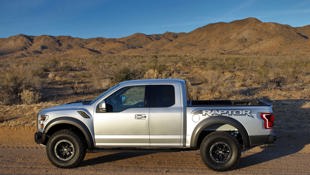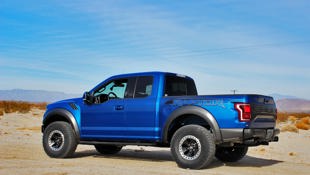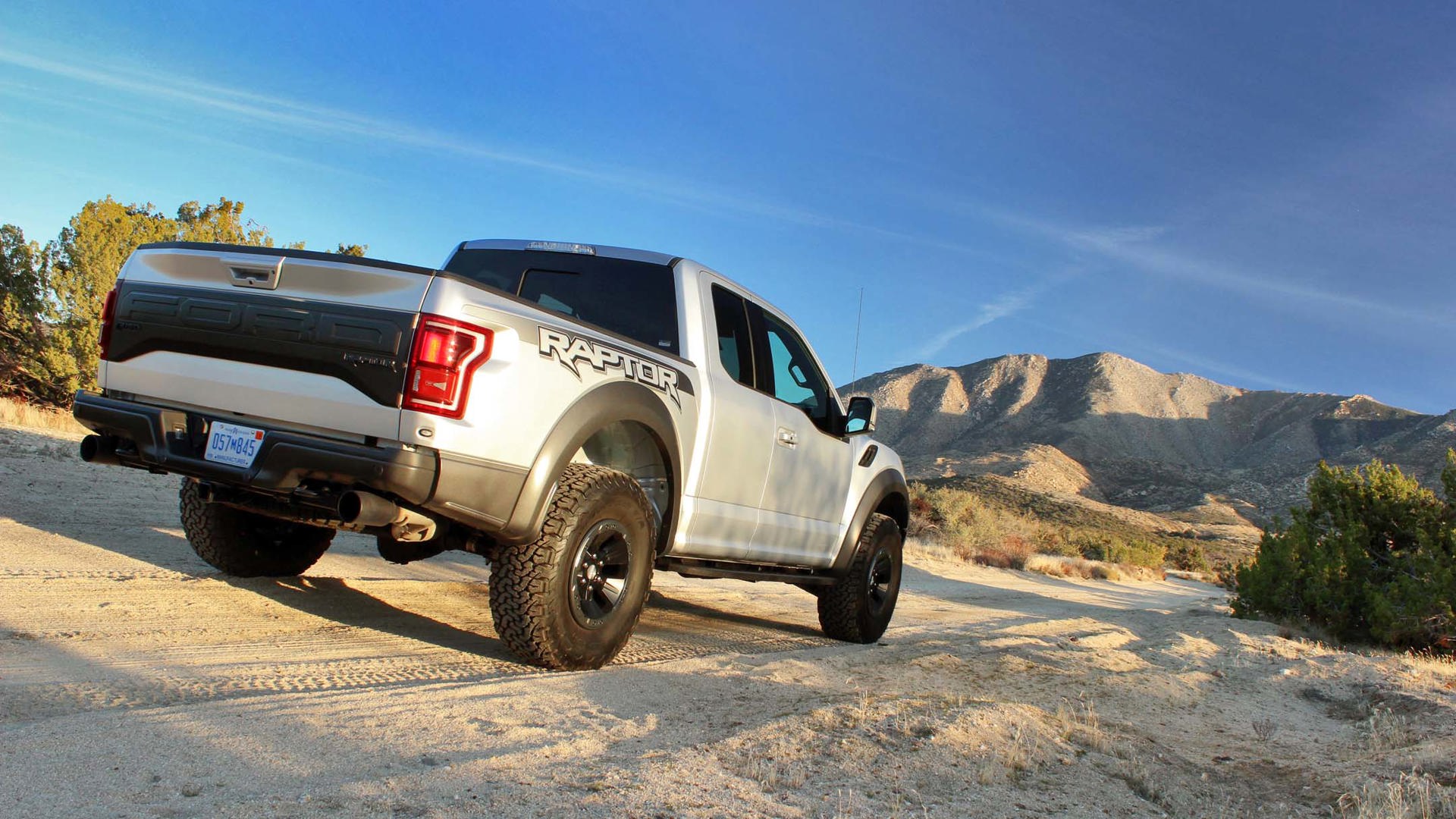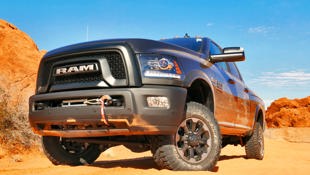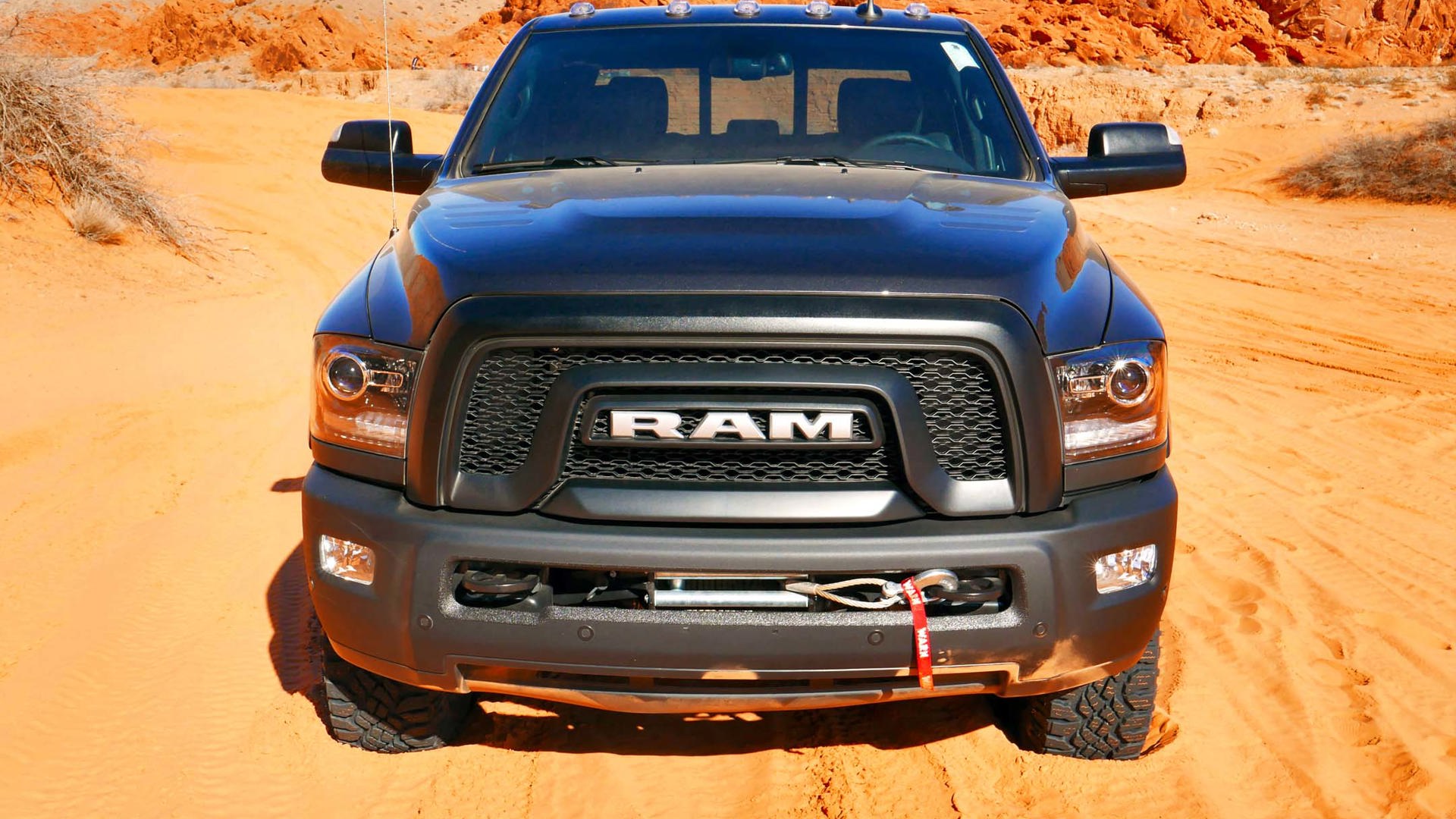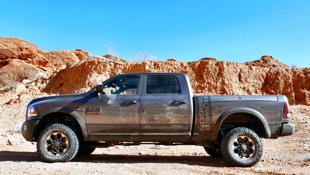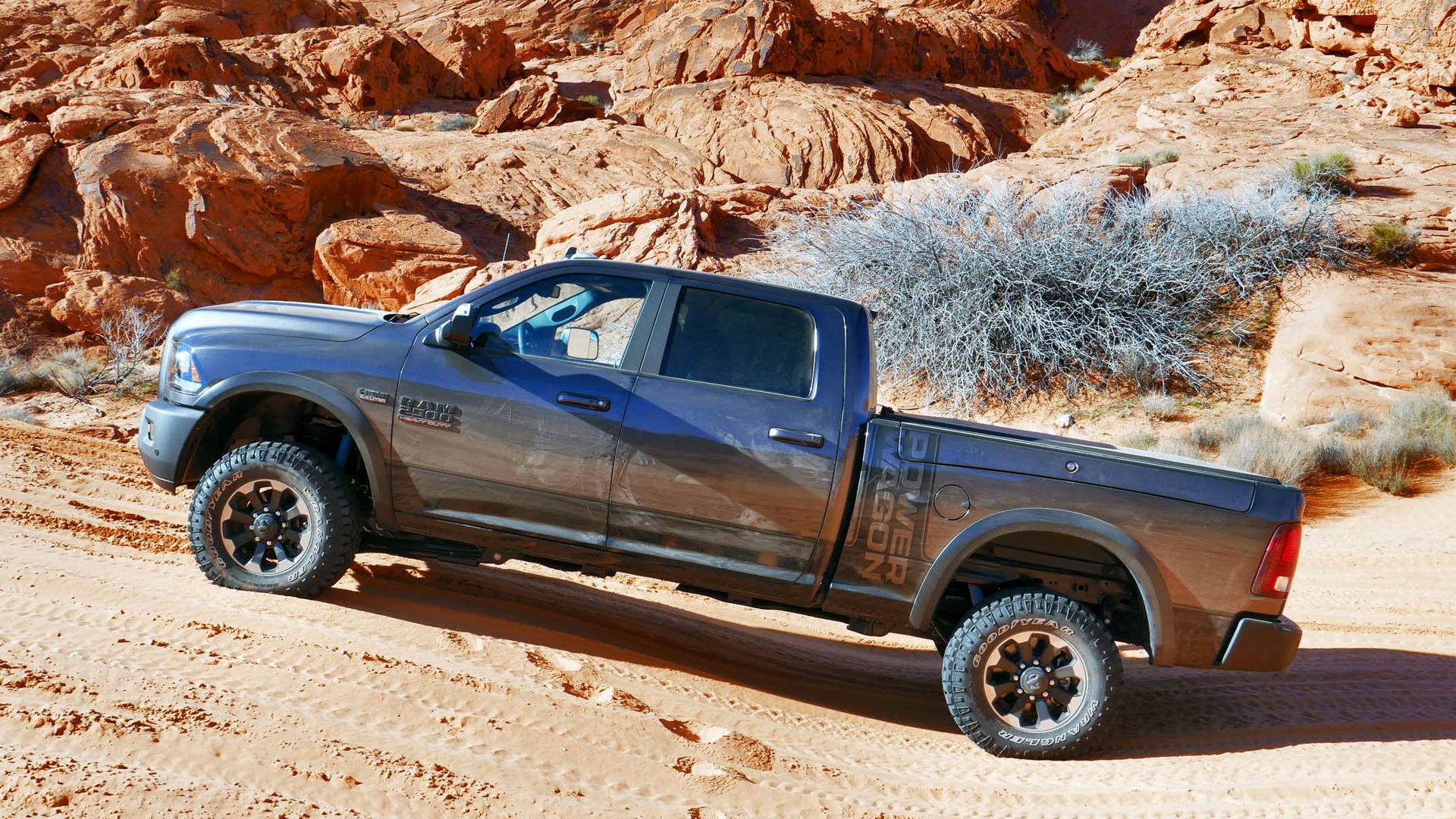Comparison Data
|
2017 Ford F-150 Raptor
|
2017 Ram Power Wagon
|
|---|---|
|
Engine Displacement
3.5L Twin Turbo
|
6.4L
|
|
Engine Cylinders
V6
|
V8
|
|
Peak Horsepower
450
|
410
|
|
Peak Torque
510
|
429
|
|
Fuel Economy
LOL
|
Bwahahahaha
|
|
Cargo Space
N/A
|
N/A
|
|
Base Price
$68,399
|
$58,945
|
|
A/C Tax
$100
|
$100
|
|
Destination Fee
$1,700
|
$1,795
|
|
Price as Tested
$70,199
|
$60,840
|
|
Optional Equipment
|
The 2017 Ford F-150 Raptor has debuted to critical acclaim from those who would skim across the surface of the desert at triple-digit speeds with impunity thanks to the truck’s Baja-taming suspension and chassis, not to mention its newfound twin-turbo drivetrain. Still, as awesome as the Raptor is, it’s not the only pickup out there designed to let you pound an off-road trail into submission, as the 2017 Ram Power Wagon has been lightly refreshed to provide an old-school alternative to the high-tech Ford.
...as awesome as the Raptor is, it’s not the only pickup out there designed to let you pound an off-road trail into submission
How do these two rivals stack up? We have covered these truck in our individual first drives of the Ford F-150 Raptor and the Ram Power Wagon, but let’s take a look at the numbers and see where each pulls ahead.
Weight
There’s a key difference between the Raptor and the Power Wagon that we need to get out of the way right off the bat, and that’s their radically different platforms. While the Raptor is built off of the half-ton, light-truck F-150 platform, the Power Wagon borrows a three-quarter ton heavy duty truck chassis typically reserved for hardcore towing and hauling duty.
The end result is the Ford’s 2,508 kg of curb weight coming in at a whopping 693 kilos below the Ram’s 3,201 kg rating, or about three-quarters the mass of a Mazda Miata.
Horsepower
The Ram Power Wagon is in some respects the classic ‘blunt object’ capable of bludgeoning the terrain ahead of it into submission, and it’s fitting that its drivetrain reflects this straightforward approach. The Ram features a 6.4L V8 that generates 410 hp and 429 lb-ft of torque, sent to the ground via a six-speed automatic transmission, and while the unit is a fully modern motor in every respect, it relies on displacement to deliver the goods.
The Ford F-150 Raptor goes in the opposite direction, abandoning eight-cylinder power for the 2017 model year in favour of a 3.5L, twin-turbo EcoBoost V6 that churns our a hefty 450 horse and 510 lb-ft of torque. Not only does the Raptor tweak the Power Wagon’s nose on the dyno, but it also adds four additional forward gears to the equation via its 10-speed automatic transmission, which is a first for Ford.
Speed
As you might expect, the Ford F-150 Raptor’s significant weight and power advantage see it blasting towards the finish line far ahead of the Ram Power Wagon in any drag race. It takes a mere 5.3 seconds for the Raptor to rocket to 100 km/h, which is a good three seconds ahead of the Power Wagon. Out on the open trail cruising speed is similarly disparate, as the suspension system on the Ford allows for high speed travel over rough terrain that would bounce the heavier Ram.
Ground Clearance
The Ford F-150 Raptor is taller than the previous generation truck, which translates into just over 13 inches of ground clearance, or several inches more than what you would find in the standard 4x4 F-150. The Power Wagon is also taller than a base 4x4 2500-series Ram truck, but its bulkier construction and different approach to suspension design sees it surge past the Raptor with 14.3 inches of total ground clearance – including the remarkable ability to drive through just under a meter (30 inches) of water.
Suspension Travel
The Ram Power Wagon also leverages its hardcore chassis to shame the Ford F-150 Raptor when it comes to suspension travel. With solid and locking axles front and rear, combined with a front sway bar that can be remotely disconnected from inside the cabin to improve articulation, the truck boasts 26 inches of total suspension travel. This is a huge bump over the 13 inches available from the Raptor (13.9 inches at the rear, to be fair), and demonstrates the fundamental design differences between the rock-crawling brute and the speed-focused desert runner (with the latter offering a more complex electronically-managed traction system, paired with a single locking differential at the rear of the truck).
Towing
Need your off-road rig to serve a dual role as a practical cargo hauler? You’d be best served by the Ram Power Wagon, whose heavy-duty construction pushes its towing capacity over the 4,500 kilogram mark (10,030 lb), as long as you can find a hitch that will drop low enough to hook up your trailer. The Ford F-150 Raptor is no slouch in the towing department itself, but its half-ton construction sees it coming in with a 20 percent lower rating (3,636 kg, or 8,000 lb). If you want to self-tow – that is, get yourself unstuck out on the trail – the Ram also comes standard with a 5,454 kilogram Warn winch and 56 meters of steel cable. Yes, that’s right: the winch on the front bumper is rated to lug more than the truck can actually tow.
Price
The 2017 Ford F-150 Raptor’s impressive power, advanced technology, and hefty speed advantage over most other full-size pickups doesn’t come cheap. In fact, you’ll have to hand over $68,399 for a base four-door Raptor SuperCab, with SuperCrew (with full-size rear doors) models costing even more. The Ram Power Wagon, on the other hand, features a much more modest ask, with its $58,945 window sticker nearly $10,000 less than the Ford. Even fully loaded, with almost every comfort option filling the cabin, a Power Wagon with four full-size doors still checks in for less than what you would pay for the entry-level Raptor, making it the bargain off-road choice for pickup lovers.
